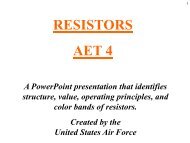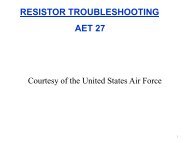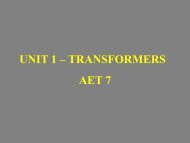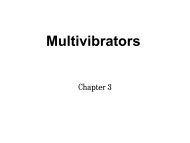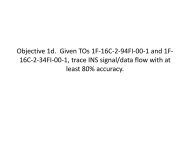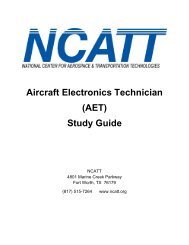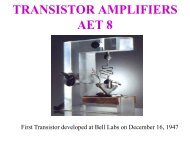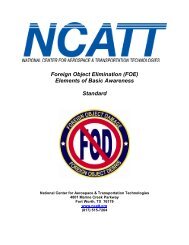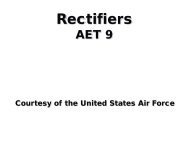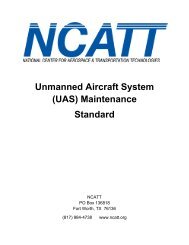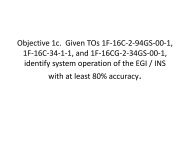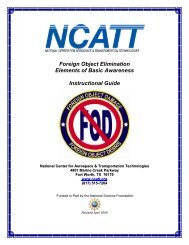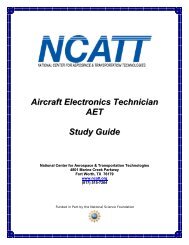Aircraft Electronics Technician AET - NCATT
Aircraft Electronics Technician AET - NCATT
Aircraft Electronics Technician AET - NCATT
You also want an ePaper? Increase the reach of your titles
YUMPU automatically turns print PDFs into web optimized ePapers that Google loves.
<strong>NCATT</strong> <strong>Aircraft</strong> <strong>Electronics</strong> <strong>Technician</strong> (<strong>AET</strong>) Study Guide<br />
• Shorted Capacitors<br />
o Conductive surfaces (plates) come into physical contact with each other<br />
o Electrical qualities of the capacitor no longer exist<br />
12. Transformer / Theory of Operation<br />
<strong>NCATT</strong> Level B<br />
Outcome: A successful education or training outcome for this task/subject will produce an<br />
individual who knows and can identify the relationship of basic facts and state general principles<br />
about “Transformer Theory of Operation”. The following is a minimum list of terms associated<br />
with this subject.<br />
Theory of Operation:<br />
• Counter EMF<br />
o See Basic Terms/Direct Current (DC)<br />
• Eddy Current<br />
o Current loss due to heating of the core that alters the overall distribution of current<br />
flowing through the conductor<br />
o As the current flows, the core heats up and resistance increases due to the core<br />
positive temperature coefficient<br />
• Hysteresis<br />
o Current loss due to a lag between the physical action occurring and the cause of<br />
loss<br />
• Primary Winding<br />
o Input winding of a transformer connected across a power line<br />
• Secondary Winding<br />
o Winding of a transformer that supplies energy to the load device<br />
• Step-down<br />
o Decreases the voltage and increases the current<br />
o Step-down transformers have more turns in the primary coil than in the secondary<br />
coil, or winding<br />
• Step-up<br />
o Increases the voltage and decreases the current<br />
o Step-up transformers have more turns in the secondary coil than the primary coil,<br />
or winding<br />
Transformer classifications:<br />
• Frequency range<br />
• Power application<br />
• Winding style<br />
Copyright © 2012 by the National Center for Aerospace & Transportation Technologies. All rights reserved. Individuals may<br />
download, print, and make copies of this document for their own personal use. Commercial use prohibited.<br />
Page 19 of 60



